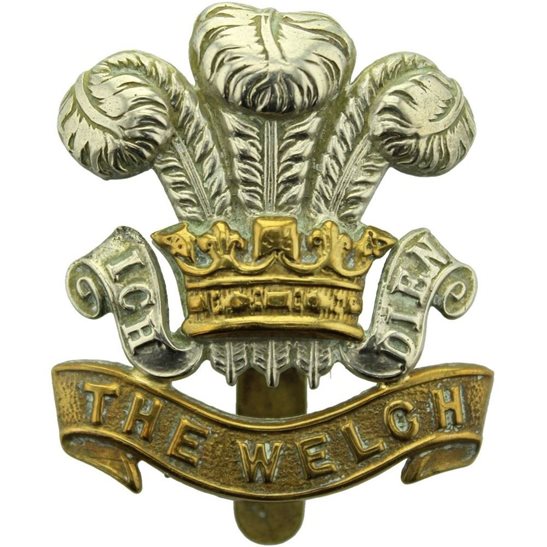Personal Details
Born: 10 November 1897 in Whitchurch, Shropshire, and known as Godfrey.
Family: He was the fourth of seven children born to Llewellyn Ffoulkes Jones, a plumber and gas fitter, and his wife Mary Ann Jones. He married Ann C Loftus and they had three children – William H, Mary A and Bernard T. The 1939 Register suggests they may had had a fourth child, but this cannot be confirmed from the civil records.
Residence: In 1901 he lived at 23 Watergate Street, Whitchurch with his parents and siblings; by 1911 they had moved to 1 Groom’s Yard, Watergate Street. The 1919 Absent Voters’ Register shows him living at 10 Dodington and by 1939 he was living at 19 Newtown, Whitchurch.
Employment: In 1911 he was in service to a gentleman as a boot boy; in 1939 a general labourer.
Died: In 1943, aged 45, in Stafford, Staffordshire.
Military Details
Regiment: Welsh Regiment (previously King’s Shropshire Light Infantry)
Rank: Private
Service Number: 285193 (previously 202772)
Date of Enlistment: Not known
Date of Discharge: 27 February 1919
Reason for Discharge: Not known
Other Information:
Brother of Thomas Harold Ffoulkes Jones who also served in WW1.
Walter was awarded the Campaign Medals (British War Medal, and Victory Medal)

The British War Medal (also known as 'Squeak') was a silver or bronze medal awarded to officers and men of the British and Imperial Forces who either entered a theatre of war or entered service overseas between 5th August 1914 and 11th November 1918 inclusive. This was later extended to services in Russia, Siberia and some other areas in 1919 and 1920. Approximately 6.5 million British War Medals were issued. Approximately 6.4 million of these were the silver versions of this medal. Around 110,000 of a bronze version were issued mainly to Chinese, Maltese and Indian Labour Corps. The front (obv or obverse) of the medal depicts the head of George V. The recipient's service number, rank, name and unit was impressed on the rim.
The Allied Victory Medal (also known as 'Wilfred') was issued by each of the allies. It was decided that each of the allies should each issue their own bronze victory medal with a similar design, similar equivalent wording and identical ribbon. The British medal was designed by W. McMillan. The front depicts a winged classical figure representing victory. Approximately 5.7 million victory medals were issued. Interestingly, eligibility for this medal was more restrictive and not everyone who received the British War Medal ('Squeak') also received the Victory Medal ('Wilfred'). However, in general, all recipients of 'Wilfred' also received 'Squeak' and all recipients of The 1914 Star or The 1914/1915 Star (also known as 'Pip') also received both 'Squeak' and 'Wilfred'. The recipient's service number, rank, name and unit was impressed on the rim.

